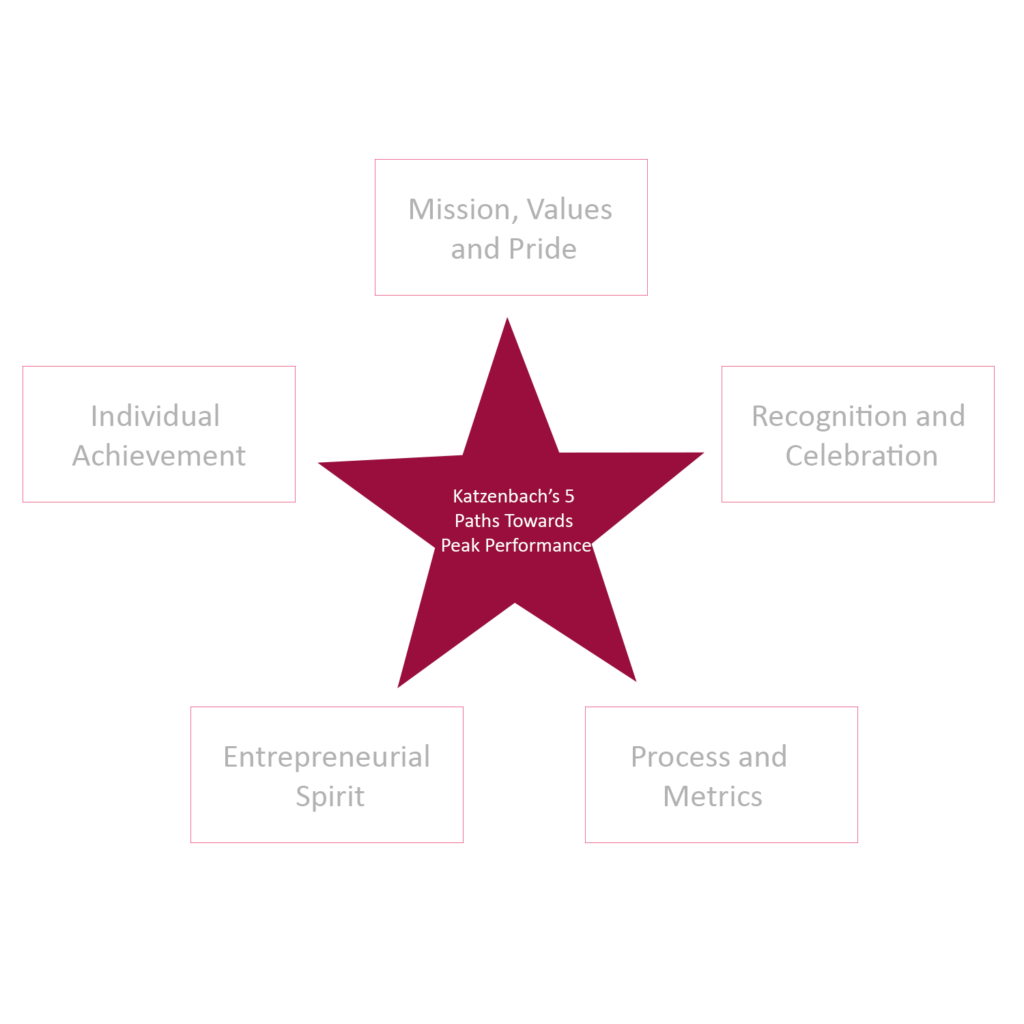12 Apr Katzenbach’s Five Paths Towards Peak Performance
In Katzenbach’s book ‘Peak Performance’ (2000), the author researches the mechanisms for driving employee performance in 25 major US organisations. He concludes that there are five key paths employers should take to inspire maximum performance from their staff, although attempting to take all the paths may be a strain on resources and hence opting for a few of them may still be suitable. The paths aim to keep employees ‘emotionally committed’ to their work, via a range of incentives, and the author believes this is the key to a high performance workforce.
Each path is designed based on the author’s proposition that organisations are constantly looking for a balance between employee fulfilment and enterprise performance. Finding the optimal balance between these two objectives is the key to developing an emotionally committed workforce. Various components of these two objectives are outlined below:
| Enterprise Performance Requirements | Worker Fulfilment Needs |
| Shareholder Return | Source of Livelihood |
| Market Share | Direction, Structure and Control |
| Customer Satisfaction | Identity, Purpose and Self-worth |
| Work Output and Improvement | Belonging and Social Interaction |
| Core Capability Development | Opportunity |
Managers must decide on certain paths, outlined below, as resources may not be available to focus on all of them. We have summarised the key points of Katzenbach’s five paths below:
Mission, Values and Pride
The author believes the relevance of the organisation’s mission statement is often lost at the lower end of the workforce. Engaging all employees with the mission statement can create an atmosphere of pride and appreciation. This atmosphere must be set at the highest level and encouraged throughout the company.
Recognition and Celebration
Formal and informal processes to recognise individual achievements should be built into the culture of the company. This ensures no achievement goes unrecognised and individuals do not feel undervalued. This can act as an incentive and motivation tool, as well as improving levels of work satisfaction.
Process and Metrics
Having clearly defined goals and measures guarantees accountability is ensured across the organisation. Individuals know what is expected and required of them and hence have a clear sense of direction, as well as being aware if they are not meeting targets. The author argues all employees should be involved with the design of these goals to have full understanding and appreciation for them. They must also not fear failure, understanding that goals may be missed.
Entrepreneurial Spirit
A high risk, high reward culture in an organisation promotes innovation and creativity and has long-term benefits for both the individual and organisation. This can be nurtured by informally encouraging innovation as well as introducing financial rewards. The author notes this is generally more common in new ventures, but should be encouraged across all organisations.
Individual Achievement
Katzenbach believes it is essential that employees can clearly see they have a chance to develop and acquire skills within the company, through opportunities and resources provided. Nurturing this development improves the quality of their employees and also acts as a motivation tool for accessing these opportunities.
Katzenbach, Jon R. (2000). Peak Performance. Boston, Mass.: Harvard Business School Press, 2000. Print.


